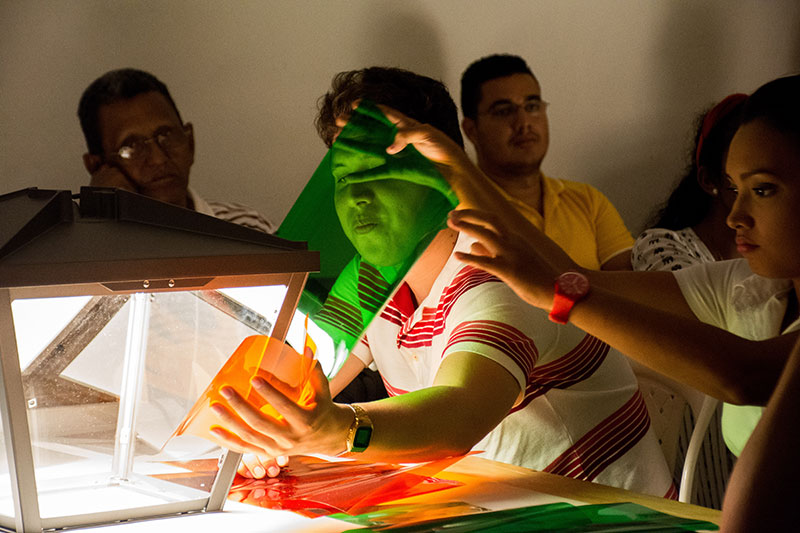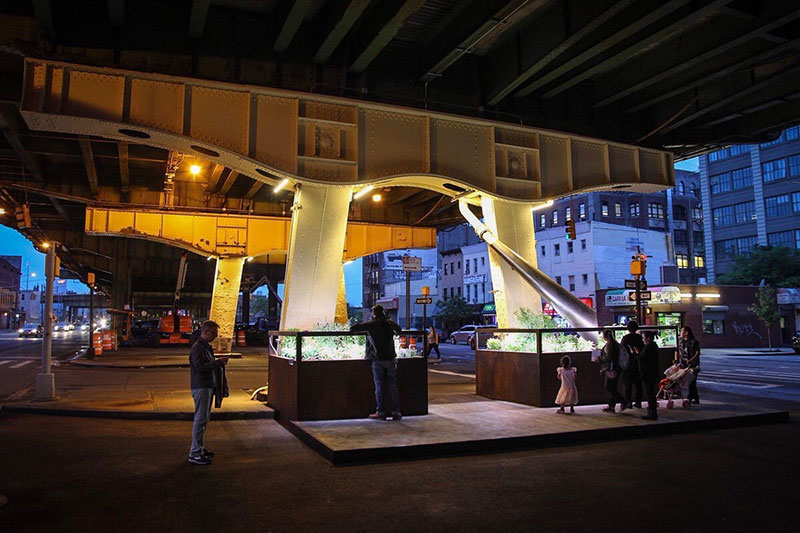Urban Nighttime Design: Bridging the Gap Between Community and Technology
août 26, 2019 — The Big Picture
A fresh approach to environmental design after dark aims to increase social and physical activity in public space—addressing both day and night workers. The intended outcome is better health, in part, through walkability and economic vitality.
Nighttime design is a time-based discipline that addresses complex conditions, from dusk to dawn, through education, research pilots and policy guidance, along with the convening of neighborhood constituents to inform and advocate place transformations.
International Nighttime Design Initiative (NTD) is committed to exploring livability in cities at night. A consortium of interdisciplinary academics and professionals, we are applying vision, skills, and know-how to develop a holistic design practice.
Composed of 30 urbanists, including lighting designers and scientists, transportation mobility and walkability experts, social researchers, public space managers, an architect, landscape architect, artist, a specialist in night and culture, a digital placemaker, and many students, among others; NTD addresses a neglected area of city design, a darkened blind spot, through a variety of disciplines.

Night is a time, but it is also a place. Residents, workers, and visitors each view the night through their own unique lens of perception. Depending on one’s viewpoint, the night can be poetic or dangerous, romantic or lonely, rowdy or sleepy. In addition, hallmark urban design issues such as equity, women’s safety, transportation, and inclusion are magnified at night.
To facilitate analysis, and to evaluate and propose outcomes, NTD’s “Shades of Night” framework sets the stage for neighborhood studies. The post-sunset built context is typified by a rhythm of light and dark patterns such as window-lit street walls, shadowed trees and park gates, open and shut businesses with or without displays, which counterpoints monochromatic public illumination of streets and recreation areas. Overlaying these public and private lighting phenomena are visual punctuation: traffic signals, blinking media, and the rare art feature. Significantly, as human activity changes throughout the night, public street and sidewalk lighting, does not. With this observation, possibilities for transformation commence.

Lights blink, take your places. Then they fade, time for the drama to begin.
Theatrical productions are performed within dynamic, programmed lighting atmospheres denoting the scenic place. Digital control systems are the backbone of theatrical stage lighting. Similarly, the responsive component of architectural smart lighting is software. Nighttime design principles encourage diversity of after-dark public-space atmospheres and usage. Whether a traditional night walk and wander or a journey to a specific destination, illumination is key to the creation of innovative spaces for live performance, poetry readings, markets, recreation, and other social strengthening endeavors.
Conversion from traditional light sources to LED, of course, provides energy reduction and economic benefits. Research supports an economic case for multi-year ROI which includes savings in maintenance and energy costs–providing a 50-60-percent energy reduction over standard street lighting. Combined with dimming, truly responsive lighting can see an additional 20-30-percent energy savings.
The urban night designer’s focus is the everyday, lived experience in the post-twilight city. To establish a safe and welcoming physical setting, design must include citizen-informed considerations. Moreover, we believe truly useful and digitally-connected civic technology usage will be co-created with stakeholders, from design to evaluation.
Within this broad context of smart cities, an exemplar is a Boston Beta-Blocks, a one year pilot which was publically launched in June 2019. The Mayor’s Office of New Urban Mechanics selected Emerson College’s Engagement Lab to design a methodology, in part, for smart technology decision-making. Apropos to this article, the Lab is “developing methods of community engagement alongside technology.” Three neighborhoods have been identified. Focused on these “exploration zones”, participation is activated with local Zone Advisory Groups and Youth Tech Explorers, a traveling exhibition which includes ingeniously designed games for orientation and awareness building and workshops. An IoT (Internet of Things) device – a temporary proof of concept – is installed in each site e.g. digital displays, air quality sensors, and a parking application. These devices are the fulcrum for local input. The end goal is to influence future Boston’s smart city strategy—the what (which smart systems) and the where (which neighborhoods) through authentic social research. The Lab will produce an implementation guide aiming to instigate productive relationships between government, commercial sector, and citizens for next-generation digital cities.
In the old-guard playbook, top-down decisions streamline the execution of the public-realm planning process. However, as the public itself gathers strength through (understandable) resistance to big data and NIMBYism, not only is civic engagement key to identifying the pain points that smart technologies claim to solve, but as smart cities research Engagement Lab specialist John Harlow, states, “Deploying innovation is difficult, but community involvement can be key to efficiency.”
In short, nighttime experts and aficionados envision that public street lighting and private lighting—including shop fronts, advertising boards, and entry canopies—will fuse into a sensor-driven network of lighting assets, creating a connective tissue that adapts to functional and aesthetic criteria over time. Continued studies, prototypes, and refreshed policies are urgently needed to support this inclusive, creative nighttime vision.
Nighttime designers welcome an opportunity to develop cooperative agreements with smart technologists, telecoms, and lighting manufacturers, for tomorrow’s engaged, networked communities
Featured image: Smart Everyday Nighttime Design © Don Slater, Configuring Light. Full street view: a successful prototype-pilot. The atmosphere is typified by highly accurate color-rendering, an average lighting level which meets requirements, the nighttime, streetscape character is defined by lighting and lanterns, and accented by sparkle.